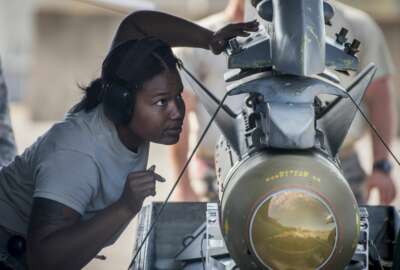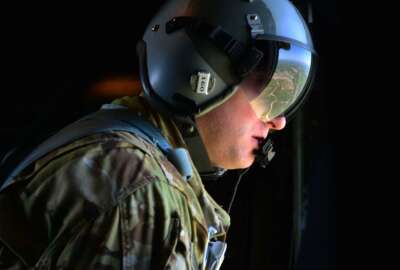
Air Force considers Frankenstein planes to build capacity
The Air Force is considering bringing back old planes to serve as drones.
Best listening experience is on Chrome, Firefox or Safari. Subscribe to Federal Drive’s daily audio interviews on Apple Podcasts or PodcastOne.
The Air Force is considering resurrecting old planes from the junkyard to serve as mostly autonomous drones in the near future.
You read that right, the Air Force is thinking about making Frankenstein planes a new force in the military.
“This is clearly an area where we agree there is great potential to advance [unmanned aerial] technology,” said Maj. Gen. William Cooley, commander of the Air Force Research Lab. “As far as technology and the type of things we need to do to build capacity and capability, this is clearly an area of building up autonomous systems that we need to be looking at and we are looking at.”
The idea is highlighted in the Mitchell Institute for Aerospace Studies’ newest policy paper.
“We put out the idea of converting aircraft that are currently in storage simply because cost is everything right now and if you look at those airframes they are certified combat aircraft,” Douglas Birkey, executive director of the Mitchell Institute, told Federal News Radio.
The Air Force would just have to add autonomous systems to the planes to make them work since they are already fitted with radar and everything else the planes need.
“The Air Force currently has long-term storage at the 309th Aerospace Maintenance and Regeneration Group at Davis-Monthan Air Force Base in Tucson, Arizona,” the policy paper stated. “While they may not be the type of aircraft the service would want to send into harm’s way with an airman inside, they could prove exceedingly useful when employed in an unmanned fashion, particularly when teamed to create extended kill chains that increase the survivability of exquisite manned aircraft.”
These planes, which could consist of F-16s, would not be controlled by remote pilots like the MQ-9 or other well-known drones. Rather, the Mitchell Institute envisions a completely autonomous plane that only relies on humans for certain actions.
“You might have humans entering the loop to validate a decision they make or something like that, but they’re not actually flying by way of remote control,” Birkey said.
As for cost, Birkey said conversions are comparable to what the Air Force already does with F-16s when it turns them into drones for training. That cost is about $1.3 million.
The drones would be more expensive because of the autonomous technology.
“It’s not $300 million is kind of the point [when compared to a manned aircraft] and so it’s bringing it down. Anyone knows that any option they put on the table has got to be far less than what we do for high end assets. So I think you’d be looking at things that are at the tens of millions at the low end of that,” Birkey said.
The reason the Air Force is so interested in the possibility of standing up the new drone force is because of the way the Defense Department is posturing toward what it sees as the threats of the future.
The National Defense Strategy focuses the United States’ assets toward near-peer competitors like China and Russia.
To deal with those countries, the Pentagon argues the Air Force will need more capacity.
“The U.S. Air Force faces a serious capacity-to-combat mission requirements gap, particularly with its bomber and fighter force,” the report stated. “Addressing this shortfall, while still maintaining key modernization goals, involves recognizing that the Air Force needs additive, complementary and affordable capability on the ramp as soon as possible.”
Copyright © 2025 Federal News Network. All rights reserved. This website is not intended for users located within the European Economic Area.
Scott Maucione is a defense reporter for Federal News Network and reports on human capital, workforce and the Defense Department at-large.
Follow @smaucioneWFED
Related Stories





